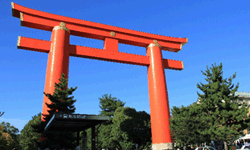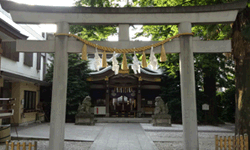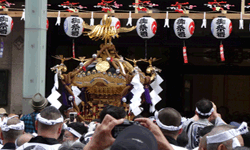
English | Japanese

English | Japanese



Shinto is the indigenous religion of Japan. Shinto is polytheistic, and it is said that there are over 8 million gods (“Yaoyorozu-no-kami” in Japanese, which means so many gods). The gods are worshipped at shrines called Jinja. Shinto
has neither a specific founder nor any books of scripture.
In a Jinja, a particular kami (Shinto deity) is enshrined. For example, in Meiji-Jingu Shrine, Emperor Meiji and Empress Shoken are enshrined, and in Tenjin
Shrine (such as Dazaifu in Kyushu, Kitano in Osaka, or Yushima in Tokyo), Sugawara no Michizane(845-903), a scholar, poet, and politician of the Heian Period is enshrined as the god of learning. Nature such as mountains, trees,
stones, rivers is also enshrined in a shrine.
In a Jinja, what can you find? Unlike Buddhist Temples, most Jinja does not have “an Image or Statue” in the main hall. Usually, before entering the Jinja, there are “Torii”
and “Komainu” at the gate of Shinto Shrines. “Torii” is the gateway to a Shinto shrine, consisting of two upright posts connected at the top by two horizontal crosspieces, made of woods or stones. Komainu are usually a pair of
carved stone guardian dogs. Both are regarded as a barrier against evil spirits. After passing the gate, some shrines have graveled path to the main hall, where people purify their minds hearing the sound of their steps. Before
going to the main hall, people also need to purify their hands and mouths at “Chozuya”.
People visit Jinja to make wedding vows, celebrate births and the New Year, and just make prayers. Like temples, there are so many
magnificent and traditionally constructed shrines, so they are also one of must-see sightseeing spots in Japan. When you pray for the god of the shrine, usually, you make two vows, two claps, pray and one vow, although some shrines
indicate how to pray for gods specifically.
Most festivals in Japan are held in dedication to the kami of the local shrine. A portable shrine in which the spirit of a deity temporarily reposes during the festival called “Mikoshi” is carried on the shoulders of
people wearing “happi” coats. Seeing such local festivals would be one of special experiences in Japan.